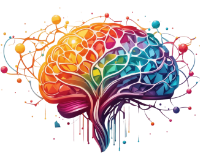Summary: The highly anticipated “Year of the AI Election” in 2024 sparked intense debate about the use of generative AI in global democratic processes. Yet, as the dust settles, our analysis reveals that while AI made its mark in ways both subtle and overt, the grand futuristic disruption many expected did not occur. Misleading deepfakes, automated communication, and other AI-assisted strategies prompted concerns—but also highlighted opportunities. Here’s a detailed look at what really happened.
Generative AI and Democracy: An Overestimated Threat?
Throughout 2024, the global conversation around the intersection of artificial intelligence and elections carried an air of inevitability. With more than 2 billion people participating in democratic polls across 60-plus countries, analysts braced for a wave of AI-generated disruptions. Concerns centered on generative AI’s ability to create deepfakes, hyper-personalized ads, and manipulative messaging. The tension reached a peak during the US spring, when Victor Miller unveiled his experimental AI candidate, a Virtual Integrated Citizen (VIC), vying for mayor of Wyoming.
Speculation spiraled: Would VIC fundamentally redefine how campaigns operate? If an AI could run for office, what would that mean for governance, accountability, or voter trust? Yet, as the election year unfolded, it became clear the reality didn’t quite match the science fiction-laden imaginations of its most vocal commentators.
The Deepfake Hype That Fizzled
One of the most-discussed threats was the rise of deepfakes—AI-generated videos or images designed to deceive. Policymakers and media watchdogs predicted an avalanche of convincing, fake content targeting political figures and exacerbating voter manipulation. Although some deepfakes did surface, their actual impact proved muted, especially in states with strict AI disclosure laws.
In the United States, political campaigns largely steered clear of creating false visuals of rivals to avoid running afoul of new regulations around deceptive AI-generated content. Deepfakes were not the silver bullet pundits warned of—but neither were they completely benign. For example, in Bangladesh’s election, deepfake videos urging voters to boycott the polls did spread, sowing confusion and distrust. Outside of large, regulated democracies like the US or EU states, safeguards remain insufficient to counteract such manipulation.
What’s particularly telling is that roughly half the instances of deepfake content served an entirely different purpose: fan-driven visualizations expressing support or satire. A notable example included viral videos of Donald Trump dancing hand-in-hand with Elon Musk—not intended to deceive but to amuse and signal allegiance. This phenomenon, labeled by experts as “social signaling,” underscores the dual-edged nature of AI tools: their power to generate societal commentary as much as disinformation.
Behind-the-Scenes Powerhouses: The Subtle Integration of AI
So where did AI actually make its mark? Not in flashy, visible formats like deepfakes but in quietly reshaping campaign operations behind the scenes. AI played a significant role in content creation, strategy optimization, and voter outreach. Politicians and their teams used it to streamline tasks that traditionally consumed time and resources, from drafting speeches to targeting niche voter bases.
In Indonesia, a political consulting firm used a custom tool built from OpenAI’s ChatGPT to compose narratives and tailor campaign strategies. These AI-driven innovations enabled faster adaptation to voter sentiment and broader personalization of campaign messaging.
Meanwhile, language translation emerged as a pivotal advantage, particularly in multilingual democracies. Indian Prime Minister Narendra Modi employed AI-powered systems to translate speeches into numerous regional languages in real time, widening his reach without sacrificing the immediacy of his engagement. This strategic use of AI focused on accessibility underscored its utility in strengthening democratic communication rather than undermining it.
Did AI Transparency Laws Work?
Within the United States, many candidates feared using AI overtly due to new state-level disclosure laws. These regulations typically required campaigns to identify AI’s role in producing ads or modifying media. For critics claiming that regulation would stifle progress, this hesitation by campaigns suggests that transparency laws may have tempered AI-related risks, albeit incidentally.
On the other hand, weaker or nonexistent regulations in lower-income democracies highlighted a glaring gap. Misleading AI media still ran rampant in these regions, underlining how disparities in oversight can unevenly affect election integrity across the world. While technology has global reach, robust governance has proven to be anything but uniform.
Shrinking Threats, Growing Opportunities
While the headlines focused on risks, AI also expanded opportunities for democratic engagement. Chatbots allowed smaller campaigns to simulate real-time, human-like outreach at a fraction of the cost of traditional canvassing. Tools that analyzed public sentiment helped craft populist appeals or test micro-targeting strategies before full-scale deployment. In some cases, these efficiencies allowed underdog candidates to compete more effectively, reshaping power dynamics in tight races.
Interestingly, the lack of a headline-grabbing AI disruption may itself signal the technology’s integration into the deeper fabric of electoral systems. Much like the evolution of TV, radio, and social media before it, AI is becoming another tool to amplify politics—not fundamentally overhaul the system. For now.
Looking Ahead to the Real Inflection Point
Experts broadly agree that we’ve only skimmed the surface of AI’s potential in political spaces. The current challenges—regulation gaps, manipulation risks, and uneven technological adoption—are roadblocks that industries have encountered with every major innovation. What happens when generative AI capabilities mesh with increasingly sophisticated voter data, predictive algorithms, and sentiment analysis tools?
More importantly, how prepared are democracies to safeguard against misuse without stifling innovation and accessibility? These questions have no easy answers, but they define the next phase of the discussion. Unlike 2024’s quiet debut, AI’s next electoral cycle may not afford voters and watchdogs the luxury of such gradual integration.
From assisting with speeches to crafting campaign strategies, AI in 2024 was less a revolution and more a subtle evolution. Whether its role expands or contracts in coming years will depend on whether societies can strike a balance between protection and progress. If this year taught us anything, it’s that the ultimate outcomes hinge not on the tools themselves but on how humans wield and regulate them.
#AIElections #GenerativeAI #ElectionTech #PoliticalCampaigns #Deepfakes #DemocracyAndTech #GlobalVotingTrends
Featured Image courtesy of Unsplash and Kalen Emsley (Bkci_8qcdvQ)
